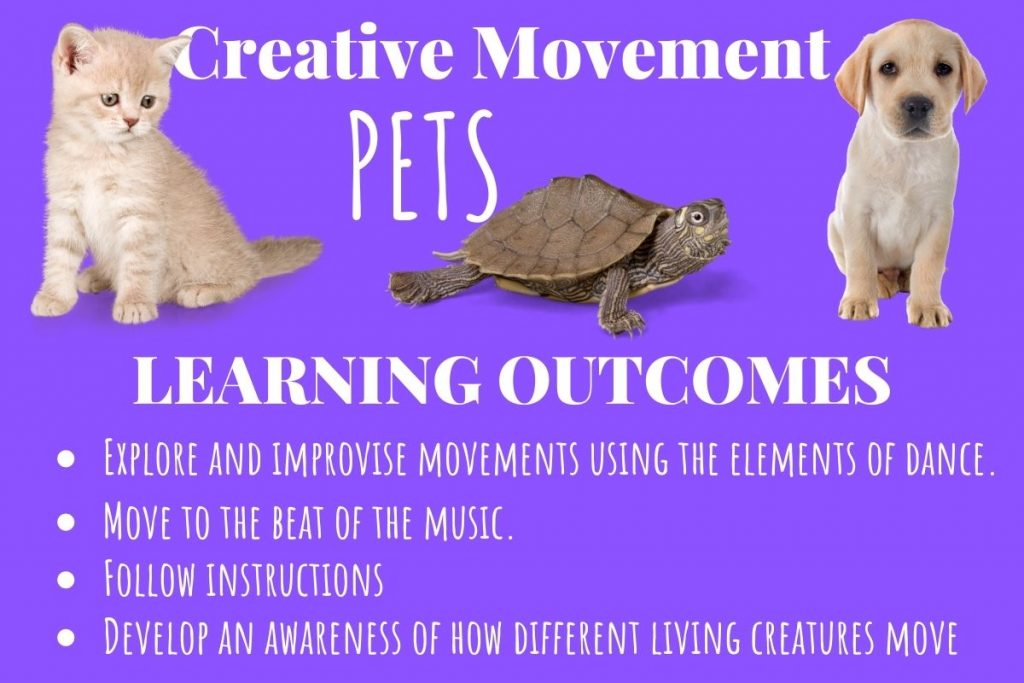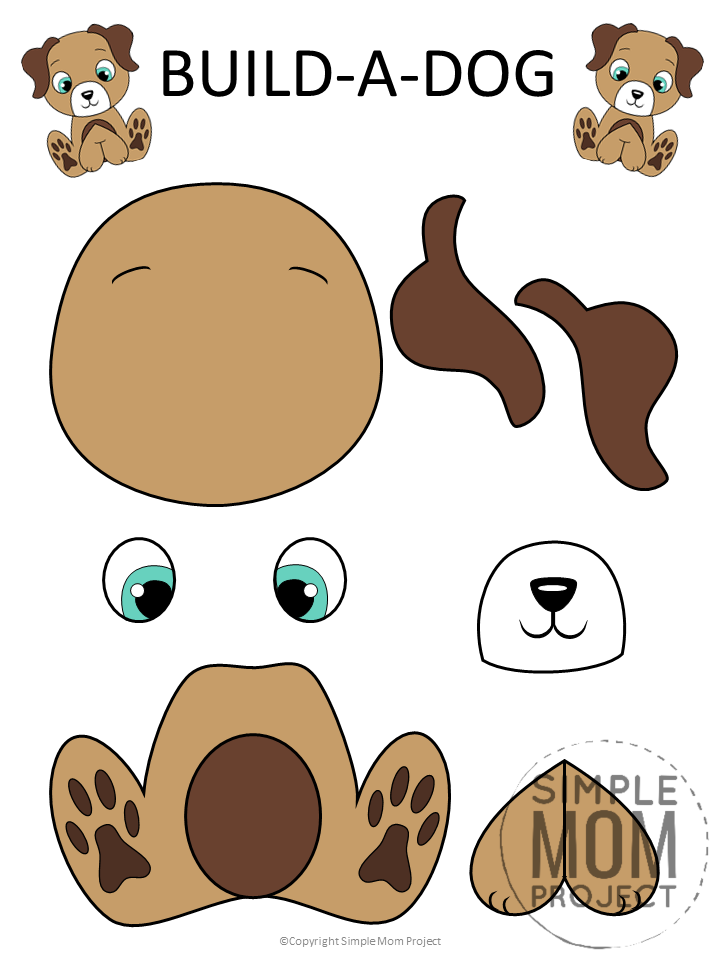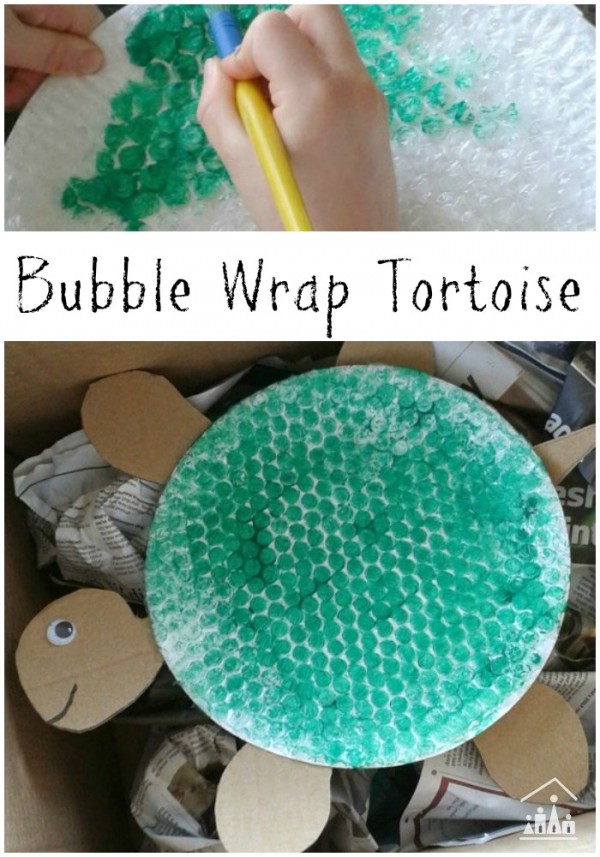All kids love animals, especially pets which is why I knew I had to make a creative dance class all about dogs, cats and tortoises because the topic is so common and relatable for so many children. But don’t worry if you don’t own any pets like us – doing this lesson also lets your kids live out their wish of having one of their own just like Sydney who helped me out in the video!
This 15-minute dance lesson all about pets explores moving our bodies in fun and creative ways to carefully selected music, specially chosen to help ignite the imagination and provide a beat and rhythm to dance to. We wag our tails and wiggle our hips to the music as dogs, we stretch our necks, arms, and legs out of our shells like a tortoise and we pounce and leap like cats.
This lesson is great for an extended brain break in the classroom or even as a springboard to ignite learning in various areas of the curriculum both at school and for home learning, but also just a lot of fun to do for any reason – especially if you are after some interactive screen time for your kids or toddlers.
Click here to go straight to a playlist on Youtube of dance classes by Move Dance Learn. Don’t forget to subscribe to get notifications as the library is growing every week!
CRAFT ACTIVITIES
LINKS TO THE CURRICULUM
Having taught in Australia as I have a Bachelor of Education (Primary), I am always looking at ways to creatively teach children and regularly used dance and movement in my classroom to enforce learning of concepts and material we were learning about in different areas of the school curriculum.

The following are some links and connections that can be made from this movement lesson to various other areas of learning!
Mathematics and Arithmetic
- If you have a dog, cat, tortoise or any other pet you can time them running or walking a set distance or course, measure their height, length of their legs, or stride. You can compare this to your own measurements or if you have many pets you can compare.
- Find math worksheets that are pet-themed.
- Count the number of teeth each animal has, what is the difference between each, which has more and less.
- Use dog, tortoise, or cat animal figurines to show counting and arithmetic problems visually.
- As these animals walk on four legs you can use them for practising grouping and the 4 times tables.
- Dogs have incredible hearing – investigate the distances as well as decibels or volume that dogs can hear and how that differs from other animals and humans.
English and Literacy
- Create a spelling list of animals that can be a pet.
- Create a list of adjectives to describe dogs, tortoises, and cats.
- Create a list of verbs to describe how dogs, tortoises, and cats move.
- Write or tell a Recount about an experience with a cat, dog, or tortoise.
- Write a narrative about receiving a new pet or perhaps even an adventure that involves a pet.
- Research and then write a report or explanation about dogs, tortoises, or cats.
- Write an argumentative or persuasive essay expressing your position about why dogs are better pets than cats or vice versa, or why you should get a pet if you do not have one.
- Read books about dogs, tortoises, cats, or other pet stories.
Social Studies, Science & Technology
- Go on an excursion to a pet rescue shelter and learn about how you can help to take care of your own as well as homeless pets.
- Learn about how these animals became domesticated over time.
- Explore how these animals have evolved over time.
- Learn about the life cycles of the animals.
- Organize a visit to a veterinarian clinic or for a vet to visit you to teach you information about pets and how to take care of them.
- Roleplay being a vet – create a veterinarian clinic at home or in the classroom and discover how to care for these animals. (links to biology)
- Research and find out the impact of pets such as cats on other native animals and the environment (In Australia, many zoos are calling for people to ensure their cats are locked up at night to prevent the death of many native animals which the cats hunt).
- Explore why people have pets. Are all pets just for companionship or are some kept for household duties such as a guard dog, or a cat to catch mice, etc…
- Investigate the benefits of having pets, as well as their disadvantages.
- Compare and discover why some animals are able to be domesticated and be our pets whereas others are better off left in the wild.
Geography
- Mark on a map of the world where these animals are thought to have descended from.
- Map their journey from their origin showing how they quickly became common household animals all over the world.
- Can you create a map of your house and track where your pet travels for a period of time?
Recent Posts
Here at Move Dance Learn, we create dance videos for kids. We have so many to offer, but thought we would put together a list of our top ten dance tutorials for kids to make them easy for you to find...
Here at Move Dance Learn, we create dance videos for toddlers, preschoolers and kindergartners. We have so many to offer, but thought we would put together a list of our top ten dance videos for...









